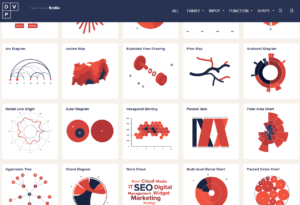In a blog post, Sonos claimed the update was necessary to “improve your listening experience” and identify issues by analyzing collected error information. Its earlier privacy policy (you can check it out here) allowed users to choose whether or not they wanted to register their device with Sonos for data collection. The new one says that opting out of “Functional Data collection” is not an option.
Data Collection is Mandatory
Data collected previously included information about equalizer usage, playback errors, and time spent listening to local or streaming music. Its new privacy policy, however, collects what the company is calling “Functional Data,” information Sonos claims is “absolutely necessary for your Sonos System to perform its basic functions in a secure way.” Functional Data includes personal information like location data, IP addresses, and more:
Registration data:
This data includes your email address, location, language preference, Product serial number, IP address, and Sonos account login information (as described above).
System data:
This data includes things like product type, controller device type, operating system of controller, software version information, content source (audio line in), signal input (for example, whether your TV outputs a specific audio signal such as Dolby to your Sonos system), information about wifi antennas, audio settings (such as equalization or stereo pair), Product orientation, room names you have assigned to your Sonos Product, whether your product has been tuned using Sonos Trueplay technology, and error information.
Sonos is also trying to collect performance and activity information shown below, otherwise known as Additional Usage Data:
Performance Information:
This includes things like temperature of your Product, Wi-Fi information such as signal strength, what music services you have connected to your Sonos system (including, for some services, your login username – but not password – for such service), information about how often you use the Sonos app versus another control mechanism, flow of interactions within the Sonos app, how often you use the physical controls on the unit, and location data when the Sonos app is in use, and duration of Sonos Product use.
Activity Information:
This includes duration of music service use, Product or room grouping information; command information such as play, pause, change volume, or skip tracks; information about track, playlist, or station container data; and Sonos playlist or Sonos favorites information; each correlated to individual Sonos Products.
How to (Partially) Protect Yourself
For now, as long as you don’t enable voice assistant support, you can opt out of sharing the aforementioned Additional Usage Data with Sonos by adjusting some settings in your apps.
Sonos for iOS or Android:
From the Sonos music menu, tap Settings.
Tap Advanced Settings.
Tap Usage Data then Turn off Usage Data Sharing.
Sonos for Mac:
From the menu bar at the top of your screen click Sonos then Preferences.
On the left side of the window, click Advanced.
Click Improve Sonos.
Check the box that reads Turn usage data sharing off.
Sonos for PC:
From the menu bar at the top of the Sonos app click Manage then Settings.
On the left side of the window, click Advanced.
Click Improve Sonos.
Check the box that reads Turn usage data sharing off.
If you’re concerned about the data Sonos may have already collected, you can edit or delete it by accessing your Sonos account online or going through the Sonos app, though deleting personal data could render your Sonos device useless. You can also shoot Sonos an email and ask them to delete your personal data, if you’re into that.
And the US high courts still say that accepting these kind of terms of service is legal. Sonos hardware is expensive and forcing people to change the terms of their use after the financial investment makes it even worse than the disgrace that this kind of behavior is already.


